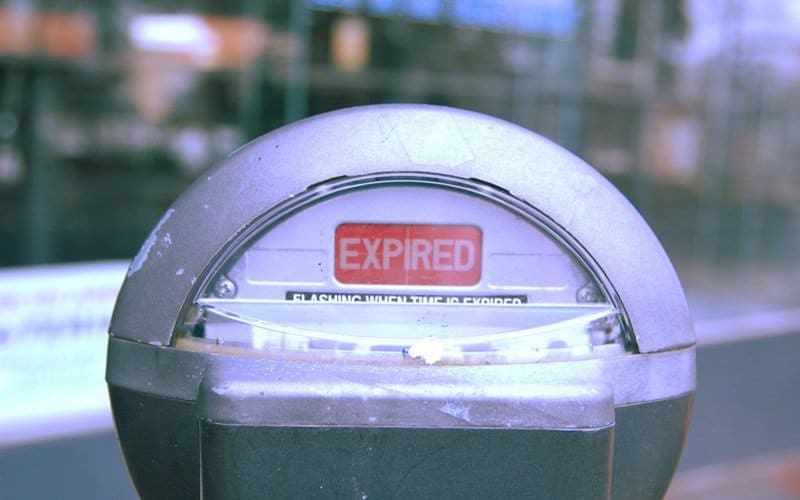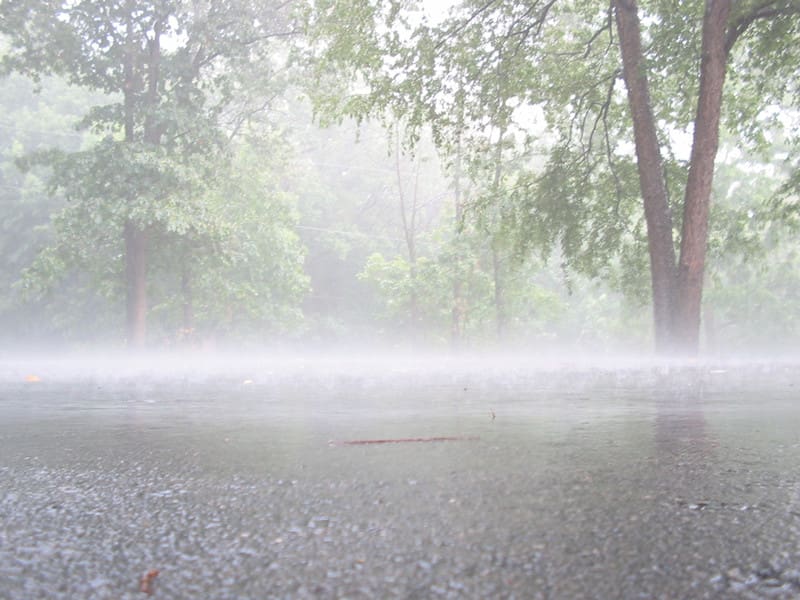This 2.2km long road is one of the most famous in Asia, if not the world, and as well as Marina Bay, is considered by many residents to be the hub of the island. That was not always the case though, and the area which today boasts some of the most exclusive shopping anywhere on the globe has gone through several different transformations over the last two centuries. The area was originally home to uncaria (known locally as gambier), pepper and nutmeg plantations and then as the name suggests, orchards of fruit trees. Then in the mid to late 1840’s, graveyards became a feature of the road that had been cut over a decade before. As well as a large Chinese graveyard, there was also a Sumatran burial ground and a Jewish cemetery – which survived until the building of Dhoby Ghaut MRT Station in 1984.
Month: August 2017
The Geylang Lease Expiration
The Geylang Lease Expiration – a Sign of Things to Come?
Residents of 191 homes in Geylang are set to make history, but not in a way they would have liked, when they will be the first in Singapore to have their properties and land returned to the state when their lease expires. The row of private leasehold terrace houses situated in Geylang Lorong 3 were each sold on a 60 year lease in 1960 – the shortest issued by the SLA for residential properties on the island, with the land returning to state ownership on the 31st December 2020. Of the 191 properties, 33 are currently owner occupied, with the rest being rented out to foreign workers or temple operators. Those 33 will have to have completely vacated the premises by the end of the lease, including their furniture and belongings, as well having settled up all bills relating to the address.
Quality is the new main ingredient of public building tenders
In the construction industry, many companies have bided for private condominium projects at rates that are incredibly low in order to make sure that their services will be engaged. While you may be tempted to think that this is a good thing, managing to construct a structure for less money, we should all be worried about the quality provided in these cases.
It is almost impossible to offer high-quality when you are bound to deliver a project within a very small budget. Besides the workforce, the price is usually dictated by the quality of materials a developer uses, which can’t be too great if you’re looking to have small prices and win a bid this way.
Overwhelming Demand for Re-offer Balance Flats (ROF)
Singapore’s Housing and Development Board (HDB) has observed that there were as many as four interested buyers for each re-offered balance flat available. The HDB gave a comment on August 1 this year about the flats saying that 71 percent were ready for use. An individual can also acquire a unit through the HDB’s BTO (Build-To-Order) program. Comparing BTO and ROF reveals that the Re-offer of Balance Flats is more popular than the BTO. While both forms of housing were availed on August 1, ROF comes from the pooling of unsold flat units from the previous year’s November SBF also known as Sale of Balance Flats.
Housing Looking up for Singapore after Multiyear Decline
Four years ago, developers wouldn’t think twice about choosing a Hong Kong property over one in Singapore. As the tables turn for the two cities, more and more investors are turning to Singapore over the world’s most unaffordable city for real estate shares.
What’s changed?
According to Bloomberg Intelligence indexes, the position of Singapore-based and Hong Kong-based developers has not changed all that much. Hong Kong and Singapore both have prime real estate, and both of them are still number one choices for venture capitalism in the region. Hong Kong rates are still lower and thus more affordable than Singapore’s, operating at more than double the discount to net asset value. However, according to analysts from Nomura Holdings, Hong Kong real estate now trades at lower valuations for larger holdings, making it not only a less profitable venture than Singapore, but also a riskier one. “Investors now see more of a downside with Hong Kong, which makes Singapore properties more attractive,” says Joyce Kwock, an analyst with Nomura Holdings.
GFA – When Bigger isn’t Always Better
When floor space, is not floor space
When it comes to finding a property, it is easy to get obsessive about things that hadn’t crossed your mind beforehand. Location is an obvious attribute that differentiates one property from another. Price and facilities are two more. Gross floor area (GFA) is something that will, as time goes on, become a more and more important factor when choosing your dream home. In a country where space is at a premium – literally – every square inch of space that an apartment has is crucial, both for you as a perspective resident, and for the agent trying to sell it. It isn’t quite as easy though as simply comparing the quoted GFA from one apartment with another. You need to first understand what actually makes up GFA and how this relates to your particular needs and preferences.
So what makes up the GFA? The best way to answer this is by saying what isn’t included. The list is pretty short. Without getting into too much detail, and the intricacies of architectural designs, for all intents and purposes, the only piece of horizontal “floor” space that does not count towards the GFA for an apartment is the RC ledge. Even there it isn’t quite that straightforward however. The reinforced concrete ledge, as long as it’s function is purely for sun shading, and is located on an external façade and does not have any parapet wall or railing is exempt. But only if it does not exceed 2 metres in width. Anything over that is counted.
Employment rate in Singapore
When it comes to the employment rate in Singapore, everyone hoped that 2017 will be better than the previous year. Unfortunately, by March, 2017, the situation was almost unchanged in comparison with the last year. In fact, unemployment in Singapore was even slightly higher at the start of this year, due to the fact that the trends started to go up in the last months of the year that just passed. Why did this happen? People in need of a job apparently needed more time than usual to get employed, mostly because in the construction and manufacturing domains the Work Permit Holders started to decline. Still, the new year did not bring just bad news. There were some improvements in the ratio between job vacancies and unemployed persons, which is hopeful considering that this ratio was in decline for seven quarters in a row.
Concerning the number of workers that were laid off in the first part of 2017, statistics show that their number is smaller than in the same period of 2016. More precisely, only 4000 people became jobless in the first quarter of 2017, in comparison with 2016, when 5440 people lost their jobs, and 2015, when 4710 went through the same though period. Still, we shouldn’t get our hopes too high because the improvement is not that significant. Tables can turn at any moment in current conditions, due to the small differences. Also, since the third quarter of 2014, the recruitment rate started to follow a downward spiral. There were slight improvements in the last quarter of 2016, when the trend in this sector went up a little, just to drop with 2.1% in the first quarter of 2017. What about resignation rate? There aren’t any changes that are worth mentioning here, as this rate kept a steady level, at 1.8%, since the start of 2016.
By March 2017, 74,400 of Singapore’s residents had no job. From this number, 67,100 were citizens of Singapore. If we are to look at these residents, taking into account their age and education groups, unemployment was higher in 2017 than in 2016 in all age and education groups. The age groups that had the biggest number of unemployed people, which also recorded the most significant increases this year, are the residents below 30 years old and 50 and over years old. Even the ones that gained diplomas and professional qualifications suffered from difficulties in finding a proper job or finding a job at all, as the unemployment rate increased in this particular group as well, from 2.3% to 3.5%.
Still, there are some sectors in which employment enjoyed a slight increase this year. Community, social, and personal services sector had 6,700 new employees. The financial and insurance services earned 3,300 more employees and the administrative and support services gained as well 1,500 more employees this year. Unfortunately, these increases where felt in a negative manner in other sectors, where a decline in employment was felt, such as the retail trade sector, which lost 2,700 employees in 2017. Things are far from being ideal when it comes to the employment rate of Singapore, so we can only hope that the future will bring some significant improvements.
For more info, take a look at the link below
http://stats.mom.gov.sg/iMAS_PdfLibrary/mrsd_qtlmr171.pdf#page=7
Existing New Launches
More resources are committed for Global aviation training and research
More resources are committed for Global aviation training and research
Singapore is a country which has always strived to contribute towards the enhancement of global aviation training and research, but they have begun to go further in providing that extra support than before towards a deeper commitment towards this sector. Singapore not only has come forward to provide more resources but also joined hands with the International civil aviation organisation (ICAO) in hosting and developing a course on civil security which is thereby target on the heads of civil aviation.
It is also great to know that within the year of 2018 to 2020 there would be seven runs of this programme being conducted all across the globe. Read more
ROS scheme
Good days came for over 1,300 HDB shops all over Singapore, as the government decided to allot funds that are destined to help these shops grow and improve, become more competitive, and provide better services to their customers. What is the total budget for this project? In the information made public by Mr. Desmond Lee, the Senior Minister of State for National Development, the government planned $29 million to be used in this direction, starting the ROS or Revitalization of Shops scheme. While the ROS scheme is not something new in Singapore, the latest one includes several enhancements to maximize its efficiency and provided results. How many shops will benefit from this new and improved scheme? 17 sites have been already selected, while another 8 applied for the Start-Up Funds that should help them out with their formation and adherence to the Merchant’s Association.
A successful Start for Le Quest
A huge success on the first day of sales by selling 280 units on Saturday for the LE QUEST which is an urban development in Bukit Batok by Qingjian Realty. Though the initial amount was 200 which was marked as selling quantity, they were so interested which was beyond the demand of initial number and studio to three-bedroom units were more popular according to the developers. Qingjian Realty was able to cover up a large number of people and they were able to make it more than their demand of supply on its first day which was a huge success for them.
The Singapore real estate market is constantly demanding new properties
According to the URA second quarter figures, it’s pretty clear that the demand for some new private residential homes has improved quite a bit in the first half of this year. At this time, it’s clear that the market is booming, and customers couldn’t be happier with this particular idea.
According to some of the sales figures, the sale of private residential units is up by 64% when compared to the first half of 2016, so it’s clear that the market is doing very well. The market saw a sale of 6039 units during the first half this year when compared to 3675 units sold in the past year.
The Weakening US Dollar – Good News for Singapore
The future may be looking brighter for the Asian economies if the signs coming out of the US are anything to go by. Asia in general and Singapore especially is always going to be effected by what is going on in the economies of the world’s major players, and what happens in the US financial markets has a significant knock on effect on this side of the Pacific.

As far back as February of this year, President Trump suggested that he would be happier with a weak dollar, as that helps American companies to sell their products in foreign markets. Ironically, countries doing just this – or currency manipulation as Trump termed it – was one of his particular bug bears during his presidential campaign, citing China as the biggest offender at something that was deemed harmful to American and American companies’ interests.
Now Trump’s wishes seem to have come true, as analysts in the States are predicting steady but unexceptional growth rates for its economy over the next few years. What usually happens when that is the case is that the dollar subsequently weakens.
Bringing it back to Asia, and the weaker the American dollar (up to a point) is, the better it is for Asian economies and the Asian stock markets. Added to that is the fact that those emerging economies are now in a better shape than just a few years ago, and are in a position to take full advantage of it. Trade is increasing in Asia with some experts expecting a 10% increase in trade over the coming 2 years.
There are the usual question marks over the state of the Chinese economy, especially the amount of debt it is carrying, but Ken Peng, an Asia-Pacific investment strategist, in a recent interview, stated that he thought that the question of China’s debt had been overstated, and that when taken hand in hand with the country’s assets it is no cause for concern and is actually no different from those of other developed countries.
Indonesia is another economy that was cited as being one to benefit, especially in light of its reform drives, however political instability ahead of its elections in 2019 may put a dampener on its ability to take full advantage.
Overall though, it looks like the region is in a good place to take advantage of these changes happening in the United States. In the same interview Mr Peng was confident that the state of the American economy could well turn into “a tailwind” for Asian markets.
One of the reasons for this is that investors will be looking to just such emerging markets to get better returns than those that they can get in developed markets.
Hot selling new launch condo in Singapore
Upcoming new launch
The ABC Waters Sites in Singapore
An ambitious project started in Singapore called ABC Waters, which is destined to keep the city safe from floods, improve its appearance by creating beautiful green gardens and clean water streams, and to bring inhabitants together. There are already palpable proofs that the project is working, as there are a few ABC Waters sites in Singapore everybody can enjoy. Let us take a look at each of them and see their features, trying to imagine at the same time how the entire area will look once the project will be completed.
- MacRitchie Reservoir
The MacRitchie Reservoir is quite a reputable and popular reservoir in Singapore, due to the fact that it is one of the oldest around. Because it is also located in the proximity of nature reserves, Singapore’s inhabitants see it as a great opportunity to spend time out in nature, being a place much preferred for leisure activities, such as jogging, walking, cross country, tai chi, and even canoeing and kayaking. To protect the reservoir’s ecosystem while allowing inhabitants to enjoy it like they always did, the amenities of this park and its infrastructure were the ones that were improved right from the start. A modern car park and a newly improved pontoon for kayaks, together with F&B outlet and a building made to serve both kayaking and canoeing, were all added to attract people in the area and make their time spent here very pleasant.
- Kallang River
For everybody that lived in the area or knows how the Kallang River looked before the ABC Waters program started, this river was just another concrete canal that was passing through Singapore. Due to the collaboration of PUB and NParks, this canal turned into a beautiful natural river that is today home for a number of birds, insect, and even water animal species, while providing a much-improved experience to all the people that wish to enjoy the Bishan-Ang Mo Kio Park. To prevent soil erosion and give the river a natural look, a brand new technique was used in Singapore for the first time. The technique is called soil bio-engineering and it assumes the use of natural materials, such as rocks and plants. Once the transformation of the river was completed, wildlife was attracted into the area, which considered the new Kallang River a suitable home, populating the area and changing the entire atmosphere in the park.
- Lower Seletar Reservoir
This is another great reservoir when families living in Singapore can enjoy a great time. It is more than perfect for walks and spending time in the outdoors, while children can have a blast at the water play area. Also, a variety of activities can be enjoyed here, such as jogging, kayaking, fishing, and others. Still, if you plan to go fishing in this reservoir, do know that there are special areas destined for such activity. You should also fish responsibly, using appropriate equipment and being careful not to hurt the passersby or the otters that found shelter in this reservoir. Other than this, the Lower Seletar Reservoir is another beautiful place in Singapore that enjoyed the attention of the ABC Waters program.
New Launch Condos that are closer to the above ABC water sites
Serangoon Ville is sold to an Oxley-led consortium for S$499 million in a collective sale
Recently, a consortium that’s led by Oxley Holdings has just purchased Serangoon Ville, which is a HUDC estate that you can find in the Serangoon North Avenue 1. The selling price for this is S$499 million, and the sale was a collective one. The initial expectation was to have around 430 million at most, but it seems that the results were more than interesting, to the point where everyone was more than happy with the way everything managed to pan out.
This is the seventh collective sale this year and the total amount of deals is more than 2.5 billion in worth, although only less than half of that value was actually sold in the end.
Stormwater management for ABC Waters
Most of the land in Singapore, more precisely two thirds of its surface, represents water catchment areas. This means that each time there is a storm and there is significant rainfall, the accumulated water can reach clean reservoirs, risking compromising their balance. Thus, through the ABC Waters program, PUB wishes to seize storm water and clean it properly, before allowing it to run into any of Singapore’s reservoirs. Having in mind that there is an annual quantity of 2,400 mm of rainfall in Singapore, this type of water management is more than useful if we are to reach the status of City of Gardens and Water.



